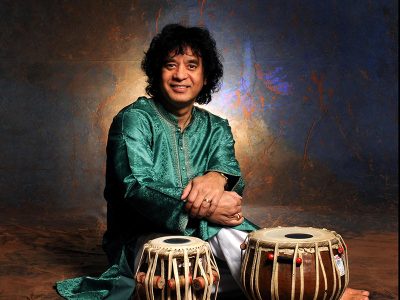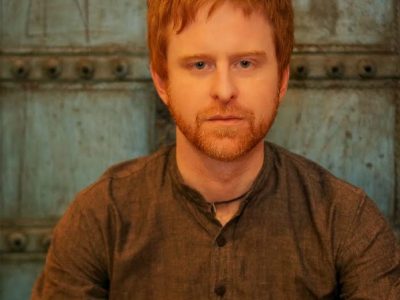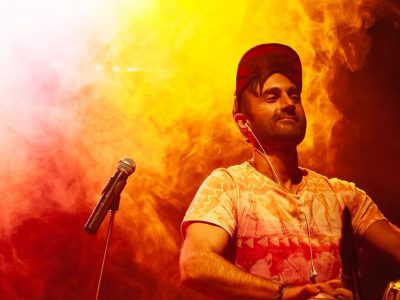- News
- Q & A with Neelamjit Dhillon
Q & A with Neelamjit Dhillon
We asked Vancouver-based students of Zakir Hussain to talk about their experiences with the tabla master. Here, Neelamjit Dhillon discusses the relationship between jazz and indian classical music, and what he has learned from Zakir.
Neelamjit Dhillon is a professional musician equally versed in both Eastern and Western traditions, playing both jazz saxophone and tabla. He is currently pursuing a doctorate in performance at the California Institute of the Arts.
What was it about tabla music that drew you in? What do you love about it?
ND: I grew up with the sound of the tabla on recordings in our house and in person at the Sikh temple. My parents wanted me to learn tabla as a means of staying connected to the country that they left to come to Canada and also so that I not grow up too ‘westernized’. I feel in love with the sound of the instrument immediately as tabla is one of the most complete percussion instruments in the world. Not only can it can express highly technical complicated rhythms but it also has a deeply expressive melodic side as well.
How did you come to know Zakir Hussain? How has he inspired you or influenced your own music?
ND: In Vancouver, I was lucky enough to learn from Satwant Singh who was a student of Ustad Allarakha, Zakir Hussain’s father. Satwant Singh had learned in Mumbai and knew the family and by extension, I was connected to this tradition (the Punjab gharana/style) through him. I came to know of Zakir Hussain’s workshop in California and was permitted to learn there as I had studied in the same stylistic tradition. Meeting and learning from him has changed every aspect of my life. He is not only a musician of the highest caliber, a master teacher, but also an amazingly humble human being with a big heart.
You also play jazz saxophone. Can you talk about the intersection of jazz and classical tabla? What can these two traditions of music say to each other?
ND: Indian classical music and jazz are very similar to me and I would have to say the underlying principles of both are virtually the same. Although the musical languages involve slightly different grammar, innovation within tradition is a major unifying factor. Both styles involve improvising over structures with melodic and rhythmic gestures. These structures, (raag, taal, harmony, form) are used as vehicles for personal expression. This expression is rooted in tradition but allows for musicians to find their own path with which to express it.
Can you share your favourite lesson or revelation that came from studying under Ustad Hussain?
ND: There is nothing that can compare to listening him play in the same room as you. Hearing his sound and balance on the instrument, hearing him recite the rhythms, seeing how he expresses the music through his facial expressions and the movement of his body; every time I see him play, teach or perform, is a revelation. He makes the most complicated rhythms seem simple and makes you feel like you’re capable of the same mastery. Even though you know deep inside that isn’t true, the feeling of possibility is invigorating and keeps all of the students inspired and continually striving to be better.



